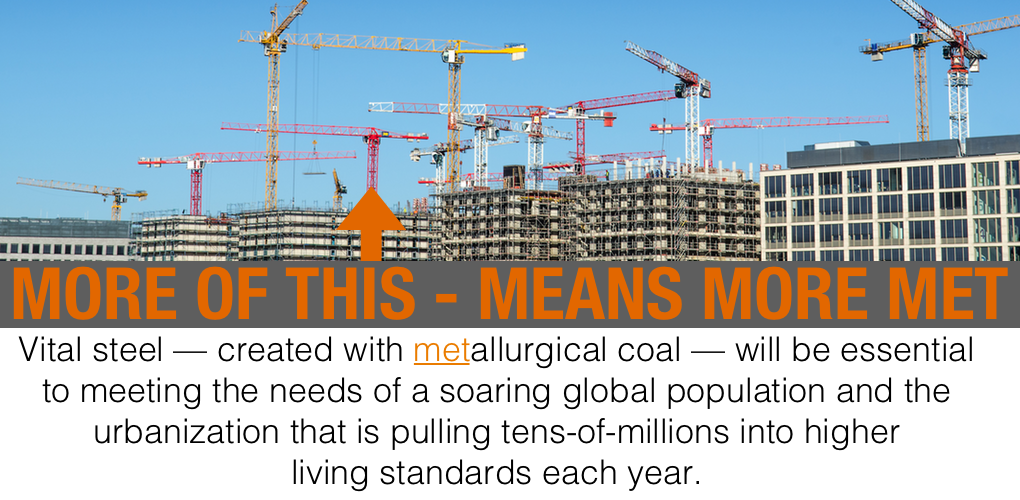
Mines for Manufacturing Tomorrow’s Steel
The pandemic, the war in Ukraine, and the energy and supply chain crises that followed, have all upended trade flows and commodity markets, requiring a near moment-to-moment focus on near-term market conditions with supply shocks and inflationary pressure driving unprecedented policy responses. While the shocks still reverberate, there’s now room for a return to long-term thinking and consideration of the dynamics that will shape markets for decades to come.
Globally, rapid population growth, urbanization and infrastructure investment are all driving ever-larger demand for steel and the metallurgical coal needed to produce it. These overarching trends, buttressed by a new focus on supply chain security, all point in favor of U.S. met producers. With 70% of the world’s steel manufactured with met coal, America’s 170-plus met mines, supporting 11,000 direct jobs, will be critically important to providing the world’s essential building material.
At home, as the U.S. looks to reinvigorate its industrial base and infrastructure, steel demand is robust. The Infrastructure Investment and Jobs Act IIJA, and the new roads, bridges, port infrastructure and even the hundreds-of-thousands of electric vehicle chargers that will come from it (largely utilizing American-produced materials) will require enormous amounts of steel.
In the run up to the (IIJA), one consultancy estimated that $1 trillion in infrastructure spending in a potential infrastructure deal would boost domestic steel demand by an additional 6 million tons annually. We’ve gotten that and more. While bridges and pipelines immediately jump to mind as symbols of steel demand, the accelerating deployment of wind and solar capacity, and the transmission infrastructure needed to connect it, is also remarkably steel intensive. Just one high-voltage transmission tower requires about 40,000 to 60,000 pounds of steel. Each new megawatt of solar power requires between 35 to 45 tons of steel and each new megawatt of wind power requires 120 to 180 tons of steel, with massive offshore wind turbines requiring even more.
And as large as U.S. steel demand will be, the infrastructure and energy investments made here are but one slice of the global pie. For example, China, alone, plans to add 160 gigawatts of wind and solar capacity just this year. Global energy infrastructure investment is poised to be a multi-decade demand driver in the first world as well as in developing nations working feverishly to raise living standards.
More material – with perhaps none more important than steel – will be essential to meeting the needs of a soaring global population and the urbanization that is pulling tens-of-millions into higher living standards each year.
The global population is well on its way to reaching 10 billion by 2050. The United Nations reported that 55% of the world’s population now lives in urban areas and that proportion is expected to reach 68% by 2050. Some 7 billion people will be living in cities the world over.
According to The World Bank, more than 650 million people have been lifted out of poverty over the past two decades thanks to urban growth. As urbanization only quickens, providing the materials to enable it will be critically important. Bill Gates observed that in the next few decades, the world’s building stock is going to double. “It’s like adding another New York City every month for 40 years,” he said. It’s no surprise then that steel demand is projected to be 1.5 times higher by midcentury. With two thirds of U.S. met coal production going overseas, American mines will be critically important to building the infrastructure, cities and living standards of tomorrow.
- On February 23, 2023
